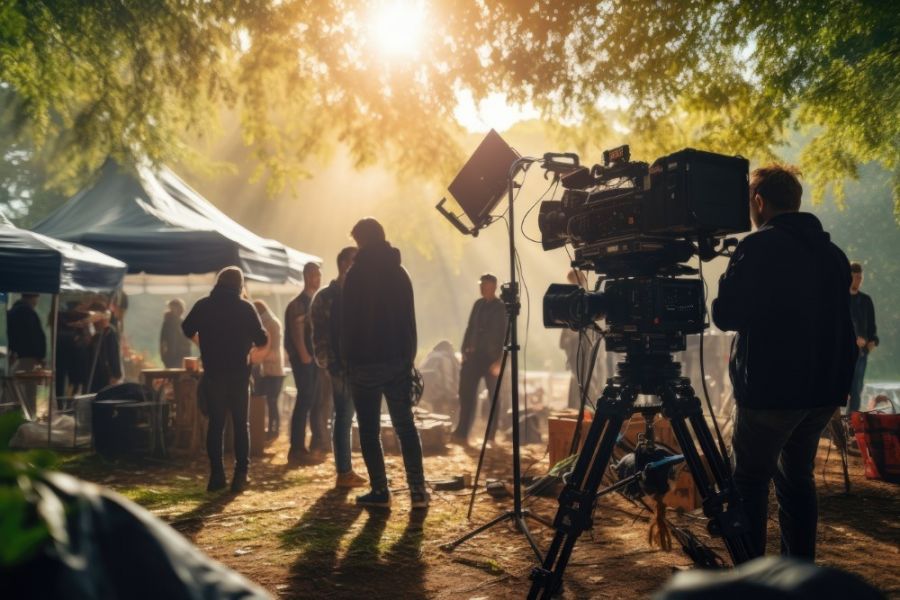Environmental challenges in cinematography

Though rarely mentioned, the film sector takes the responsibility for significant part of global carbon emissions.
As the figures show, audiovisual production emits between 50 and 3,500 tons of carbon dioxide, depending on the size and budget of the analysed project. According to the Sustainable Production Alliance, the average size of the carbon footprint of films is 3,370 tonnes of CO2 equivalent. Is that really possible to produce eco-friendly movie without prejudice to its creative aspects?
Green film: what does it mean?
The cinematic process, from inception to post-production, presents a myriad of challenges in the quest for sustainability. Sets are constructed and deconstructed, equipment is transported hundreds of kilometres, vast amounts of resources are consumed in the pursuit of visual storytelling. Yet, amidst these challenges lies an opportunity for the industry to merge ecological consciousness with artistic ingenuity.
The concept of green film has existed already for several years, but due to its broad meaning is still misinterpret. Green film can be understood as a motion picture, which creation left as little environmental impact on the planet as possible. But that’s not all.
To officially confirm that exact film work deserves the green film label, it must achieve a label certifying its environmental sustainability. Energy saving, transport and accommodation, catering, material selection, waste management and communication are submitted for verification.
Green screenwriting
Going one step further, there appeared an idea of green screenwriting. Is that enough to write a story about environmental challenges in order to classify it as a green one?
Green screenwriting is not only a practice of incorporating environmentally conscious messages or narratives into screenplay writing, but also planning the story arc in a way it won’t require too much energy consumption on the stage of production. Such approach to filmmaking is a two-edged sword. By stepping into the world of green screenwriting, we make a decision about the creation of environmentally respectful plot, which means that since initial phase, we have agreed to make creative concessions - says Beata Migas, film director, producer, screenwriter and owner of Haddock Entertainment film company.
The imperative to convey sustainability messages might overshadow the artistic vision, leading to narratives that give an impression of forced or exaggeratedly didactic. Striking a balance between environmental advocacy and storytelling artistry becomes crucial to ensure that the integrity of the film concept is maintained.
For me green filmmaking means the reasonable preparation of the film set. First and foremost, choosing locations, which are easily accessible and don’t require unnecessary transportation of people and equipment. Substantial factor poses also source of electricity. If possible, I move towards renewable sources of energy and try to avoid power generators - summarises Beata Migas.
Beata Migas - film director, producer, screenwriter and founder of Haddock Entertainment film company. She focuses on shooting documentaries and fiction films marked by complex, innovative narrative and unusual concepts, enriched with high value entertainment. Her newest thriller “At present” was screened while 74. International Film Festival in Berlin.
Beata Migas, Haddock Entertainment



